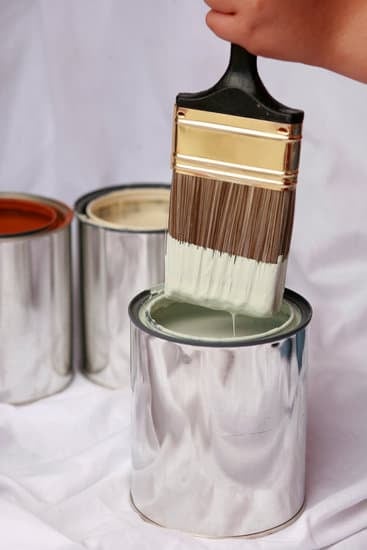From 1991 to 1999, the popular sitcom Home Improvement entertained audiences across the nation with its hilarious antics and relatable family dynamics. The show became a phenomenon in its own right, capturing the hearts of viewers of all ages and leaving a lasting impact on television history. In this article, we will take a deep dive into the world of Home Improvement, exploring its origins, characters, success, and cultural influence.
Home Improvement first made its debut in September 1991 and quickly gained popularity, becoming one of the most-watched sitcoms of the decade. The show centered around Tim “The Toolman” Taylor (played by Tim Allen), a bumbling yet lovable handyman who hosts his own home improvement TV show called “Tool Time.”
Alongside Tim are his patient wife Jill (Patricia Richardson), their three mischievous sons Brad (Zachery Ty Bryan), Randy (Jonathan Taylor Thomas), and Mark (Taran Noah Smith), and their quirky neighbor Wilson (Earl Hindman) who is always there to offer sage advice over the backyard fence.
What set Home Improvement apart was not only its talented ensemble cast but also its unique blend of comedy and heartwarming family moments. The show struck a chord with viewers as it addressed common challenges faced by many families – juggling work and personal life, navigating sibling dynamics, and finding ways to maintain a healthy marriage.
With humor as its driving force, Home Improvement provided audiences with endless laughs while also delivering important messages about love, friendship, and the importance of embracing our imperfections.
So join us on this nostalgic journey as we explore Home Improvement’s unforgettable characters, delve into behind-the-scenes secrets, analyze the reasons behind its longevity, and reflect on its enduring legacy. From memorable catchphrases to iconic episodes that had us doubled over in laughter or reaching for tissues in sentimentality – it’s time to celebrate the phenomenon that was Home Improvement and its everlasting impact on television history.
A Walk Down Memory Lane
Home Improvement, one of the most beloved sitcoms of all time, took television screens by storm when it first premiered in 1991. The brainchild of creators Carmen Finestra, David McFadzean, and Matt Williams, the show was based on their own personal experiences and drew inspiration from Tim Allen’s stand-up comedy routine.
The premise of Home Improvement centers around Tim Taylor (played by Tim Allen), a lovable yet accident-prone handyman who hosts a home improvement television show called “Tool Time”.
The concept of Home Improvement seamlessly combined family dynamics with humor and the pursuit of DIY projects. Each episode followed Tim as he navigated through various mishaps while attempting to improve his own home or help others with their renovations.
While the central focus was on Tim’s character, it also explored the ups and downs of his work relationships and provided an insight into family life through his interactions with his wife Jill (Patricia Richardson) and their three sons – Brad (Zachery Ty Bryan), Randy (Jonathan Taylor Thomas), and Mark (Taran Noah Smith).
The show quickly resonated with audiences due to its relatable themes and witty writing. Home Improvement became known for its catchphrases like “More Power.” and “I don’t think so, Tim,” which were often repeated by fans.
Additionally, it gained a dedicated following for trademark comedic moments such as the opening sequence where Tim would accidentally injure himself in comical ways or hint at future storylines through previews on “Tool Time.” This unique blend of comedy and relatability contributed to the immense success that Home Improvement achieved throughout its eight-season run.
- Created by Carmen Finestra, David McFadzean, and Matt Williams
- Based on personal experiences and inspired by Tim Allen’s stand-up comedy routine
- Premise focused on Tim Taylor, a handyman hosting a home improvement TV show
- Combined family dynamics, humor, and DIY projects
- Explored mishaps in improving his own home and helping others with renovations
- Central focus on Tim’s character while exploring work relationships and family life
- Relatable themes and witty writing contributed to the show’s popularity
- Catchphrases like “More Power.” and comedic moments became fan favorites
The Unforgettable Cast
Home Improvement had a truly unforgettable cast, each bringing their own unique energy and charm to the show. Led by the talented Tim Allen, who portrayed the lovable yet accident-prone handyman Tim “The Tool Man” Taylor, the cast was filled with an amazing line-up of characters that made the show so special.
At the center of the Taylor family was Patricia Richardson, who played Jill Taylor, Tim’s intelligent and patient wife. Together, Tim and Jill formed a dynamic duo with their hilarious banter and occasional disagreements. Jonathan Taylor Thomas stole viewers’ hearts as Randy Taylor, the middle child known for his wit and intelligence.
Zachery Ty Bryan portrayed Brad Taylor, the oldest son who often found himself getting into mischief. Finally, Taran Noah Smith played Mark Taylor, the youngest member of the family who brought a sense of innocence to the show.
In addition to these memorable characters within the Taylor family, Home Improvement also had a fantastic supporting cast. Richard Karn portrayed Al Borland, Tim’s friend and co-host on the fictional DIY show “Tool Time.” Al became a fan-favorite for his deadpan humor and loyalty to Tim. Earl Hindman played Wilson Wilson Jr., Tim’s wise next-door neighbor whose face was almost always obscured by his fence when he gave advice to Tim over it.
To encapsulate this amazing cast of characters:
- Tim Allen as Tim “The Tool Man” Taylor.
- Patricia Richardson as Jill Taylor.
- Jonathan Taylor Thomas as Randy Taylor.
- Zachery Ty Bryan as Brad Taylor.
- Taran Noah Smith as Mark Taylor.
- Richard Karn as Al Borland.
- Earl Hindman as Wilson Wilson Jr.
Together, this ensemble cast created an incredible chemistry that translated on-screen and captivated audiences for eight successful seasons of Home Improvement.
From Pilot to Legendary
Home Improvement, the beloved American sitcom, first premiered on September 17, 1991, capturing the hearts of millions of viewers across the nation. Created by Carmen Finestra, David McFadzean, and Matt Williams, the show introduced audiences to Tim Taylor (played by Tim Allen), the hapless yet endearing host of a fictional television show called “Tool Time.” The pilot episode set the stage for what would become a legendary series that would span eight seasons.
In the pilot episode titled “Pilot,” viewers were introduced to Tim’s chaotic household and his unpredictable relationship with his wife Jill (played by Patricia Richardson) and their three mischievous sons: Brad (Zachery Ty Bryan), Randy (Jonathan Taylor Thomas), and Mark (Taran Noah Smith). Set in suburban Detroit, Michigan, the show artfully blended family-friendly comedy with relatable domestic situations.
As the series progressed, its popularity soared due to its unique blend of humor and heartfelt storytelling. Home Improvement resonated with audiences because it addressed common issues faced by families while offering a comedic escape. One notable aspect of Home Improvement’s success was Tim Allen’s portrayal of Tim Taylor as a lovable and flawed protagonist. His grunting catchphrase “argh argh argh” became an iconic line associated with both the character and the show itself.
The success of Home Improvement can also be attributed to its talented ensemble cast. From Wilson Wilson Jr.’s (Earl Hindman) sage advice over the backyard fence to Al Borland’s (Richard Karn) enduring friendship with Tim, each character brought their unique charm to every episode. Notably, Jonathan Taylor Thomas’ portrayal of Randy won over teenage hearts worldwide, skyrocketing him to teen idol status.
Overall, from its humble beginnings as a pilot episode to achieving legendary status in television history, the success and popularity of Home Improvement can be attributed to its relatable storytelling, memorable characters, and unique blend of comedy. Stay tuned as we dive deeper into the remarkable impact that Home Improvement has made on pop culture in the next section.
Spanning Boundaries
Home Improvement was not just any sitcom; it had a profound impact on pop culture that left a lasting impression. Over its eight-season run, the show managed to break boundaries and connect with audiences around the world, cementing its place in television history. In this section, we will explore the remarkable impact Home Improvement had on pop culture and how it continues to resonate with viewers today.
A Family Show with Universal Themes
One of the reasons Home Improvement had such a significant impact on pop culture was its ability to tackle universal themes that resonated with viewers of all ages. The trials and tribulations of the Taylor family struck a chord with audiences who could relate to their everyday struggles and triumphs. The show brilliantly captured the essence of family dynamics, offering heartfelt moments mixed with humor that made it both relatable and enjoyable for viewers.
Through its portrayal of home renovation projects, Home Improvement tapped into a subject matter that went beyond entertainment. It sparked an interest in DIY (do-it-yourself) projects and home improvement that extended far beyond the confines of the TV screen.
The popularity of the show prompted an increase in home improvement stores’ sales as enthusiasts sought to emulate some of the projects featured in each episode. This influence on real-life trends showcased just how impactful Home Improvement was on individual lives and communities.
The Al Borland Flannel Fashion Trend
While fashion trends often emerge from Hollywood, Home Improvement introduced one particular style that became iconic: flannel shirts worn by Al Borland, played by Richard Karn. Al’s trademark fashion choice quickly became synonymous with his character and gained widespread recognition among fans. Flannel shirts saw a surge in popularity during the show’s run, as people eagerly adopted Al’s laid-back and practical style.
The enduring flannel fashion trend even trickled into popular culture outside of Home Improvement’s immediate fan base. It was not uncommon to see celebrities or musicians donning flannel shirts in public or on stage, cementing its place as a timeless fashion statement. The impact of Al Borland’s flannel fashion trend demonstrated how Home Improvement had the power to influence and shape broader pop culture trends.
From relatable family dynamics to setting fashion trends, Home Improvement truly left an indelible mark on popular culture. Its ability to connect with viewers through universal themes and inspire real-life changes made it a force to be reckoned with during its time on air. Even today, the show’s impact can still be felt in various aspects of pop culture, solidifying its status as an iconic television series.
Behind the Scenes
The success of a television show not only relies on a strong storyline and talented actors, but also on the relationships between the cast and crew behind the scenes. Home Improvement is no exception to this rule, as the show’s long run can be attributed in part to the camaraderie and synergy among its team.
One of the key factors contributing to Home Improvement’s longevity was the genuine friendship that developed between the cast members. Tim Allen, who played lead character Tim “The Tool Man” Taylor, had a close bond with his on-screen wife Jill, played by Patricia Richardson.
Their chemistry extended beyond what was seen on screen, with their off-camera rapport enhancing their performances. Similarly, Richard Karn (Al Borland) and Jonathan Taylor Thomas (Randy Taylor) formed lasting friendships with their co-stars, which added depth to their characters’ relationships.
In addition to strong relationships among the cast members, Home Improvement benefited from a dedicated crew that worked together seamlessly. The crew members were not just technical experts; they also became an integral part of the show’s family-like atmosphere. The trust and collaboration between the cast and crew allowed for smooth production processes and efficient filming schedules.
These relationships behind the scenes helped create a cohesive and supportive environment on set, which undoubtedly translated into a more authentic and enjoyable viewing experience for audiences. Through their shared experiences both on – and off-camera, the cast and crew of Home Improvement fostered connections that contributed to making it one of television’s most beloved sitcoms of all time.
| Character | Real Life Relationship |
|---|---|
| Tim Allen (Tim Taylor) | Close bond with Patricia Richardson (Jill), extended off-camera |
| Richard Karn (Al Borland) | Formed lasting friendships with co-stars |
| Jonathan Taylor Thomas (Randy Taylor) | Built strong relationships with co-stars |
| The Crew | Became an integral part of the show’s family-like atmosphere |
The Journey of Improvement
Season 1: The Beginning of a Hit
The first season of Home Improvement premiered on September 17, 1991, and it quickly captivated audiences with its unique blend of comedy and heartwarming moments. This season introduced us to the Taylor family, consisting of handyman Tim ‘The Tool Man’ Taylor (played by Tim Allen), his loving wife Jill (Patricia Richardson), and their three mischievous sons, Brad (Zachery Ty Bryan), Randy (Jonathan Taylor Thomas), and Mark (Taran Noah Smith).
As the season unfolded, viewers were drawn into the hilarious mishaps and relatable challenges faced by the Taylor family.
One of the key moments in Season 1 was the introduction of Wilson Wilson Jr., portrayed brilliantly by Earl Hindman. Wilson became a sage-like presence in Tim’s life, often offering him advice that had deeper meaning than expected. The interaction between Tim and Wilson became one of the show’s defining elements, with their neighborly conversations becoming both humorous and insightful.
Season 2: Expanding Horizons
In Season 2, Home Improvement gained even more momentum as it delved deeper into the lives of the characters while maintaining its trademark humor. This season saw an expanded role for Heidi Keppert (Debbe Dunning), who became a fan-favorite as she joined the cast as “Tool Time Girl.” Her charismatic presence added an extra layer to Tim’s popular DIY show within the show.
Another notable moment in Season 2 was when Patricia Richardson’s character Jill returned to school. This storyline highlighted the importance of education and showcased Jill’s determination to pursue her own dreams. It also served as a source of conflict for Tim and Jill as they navigated balancing their personal aspirations with their responsibilities as parents.
Season 3: Taking It Up a Notch
Home Improvement continued to soar in its third season, pushing the boundaries of sitcom conventions and bringing even more laughter to audiences. This season featured memorable episodes such as “The Great Race,” where Tim competes against Bob Vila (guest starring as himself), and “Birth of a Hot Rod,” where Tim and Jill’s oldest son Brad buys his first car.
Season 3 also introduced the audience to Randy’s girlfriend, Lauren (Courtney Peldon), who became an important character throughout the following seasons. The addition of Lauren allowed for new storylines involving teenage romance, friendship dynamics, and coming-of-age themes.
These first three seasons set the stage for Home Improvement’s ongoing success and established it as a beloved family sitcom that resonated with viewers across generations. With each passing season, the show continued to evolve and bring fresh stories to explore while maintaining its core values of love, humor, and personal growth.
Resonating with Audiences
Home Improvement is a timeless television show that continues to captivate audiences even decades after its original run. The longevity of the show can be attributed to several key factors that resonated with viewers and kept them coming back for more.
One of the main reasons for Home Improvement’s enduring popularity is its relatability. The show focuses on the everyday challenges faced by families, particularly in terms of home improvement projects and parenting dilemmas. Viewers could see themselves in the characters and situations depicted on screen, which created a strong connection and made them invested in the show.
Another factor that contributed to Home Improvement’s longevity is its humor. The sitcom was known for its clever writing, witty banter, and physical comedy, which made it consistently entertaining throughout its eight-season run. The comedic timing of the cast, especially Tim Allen in his iconic role as Tim “The Toolman” Taylor, brought laughter to living rooms across America and left a lasting impression on viewers.
Additionally, Home Improvement tackled important themes and messages that resonated with audiences. The show often explored topics such as family values, communication, and personal growth. It provided valuable life lessons wrapped in humor and entertainment, making it an engaging experience for viewers of all ages.
Overall, the combination of relatable storytelling, humor, and meaningful themes contributed to Home Improvement’s long-lasting appeal. It continues to be cherished by fans who appreciate its timeless qualities. By analyzing the reasons behind its success, we can gain a deeper understanding of why this beloved sitcom has stood the test of time.
| Reasons | Description |
|---|---|
| Relatability | The show focused on everyday challenges faced by families. |
| Humor | The sitcom was known for its clever writing and comedic timing. |
| Meaningful Themes | The show explored important topics such as family values and personal growth. |
Home Improvement’s Legacy
Home Improvement, with its blend of comedy and family values, has left a lasting legacy in television history. Even though the show ended in 1999 after eight successful seasons, its influence can still be felt today. This section will explore how Home Improvement continues to impact the world through syndication, spin-offs, and its enduring cultural significance.
Syndication: Keeping Home Improvement Alive
One of the main reasons for Home Improvement’s continued influence is its popularity in syndication. After its original run, the show was picked up by various networks and continues to air in many countries around the world. This constant rerun exposure has allowed new generations of viewers to discover and appreciate the show’s humor and relatable storylines. The relentless presence of Home Improvement on television screens ensures that its values and message remain relevant even decades later.
Spin-Offs: Expanding the Home Improvement Universe
Another way that Home Improvement’s legacy lives on is through spin-offs. One notable example is “Debbe Dunning’s Dude Ranch Roundup,” a reality TV series that aired from 2006 to 2008.
The spin-off focused on former cast member Debbe Dunning (who played Heidi Keppert) as she traveled around the country visiting dude ranches. Although not directly related to the original show, it kept alive the spirit of Home Improvement by featuring one of its beloved characters in a new context.
Cultural Significance: Lessons for Generations
Beyond syndication and spin-offs, Home Improvement has had a profound impact on popular culture by imparting valuable life lessons for generations to come. Through Tim Allen’s character of Tim Taylor, audiences were reminded about the importance of family, communication, and personal growth. The show explored themes such as fatherhood, marriage, and the challenges of balancing work and family. These enduring messages continue to resonate with viewers today, making Home Improvement a timeless source of entertainment and inspiration.
The Final Farewell
In its eight-year run, Home Improvement became a beloved sitcom that captured the hearts of millions of viewers. As the show came to an end, fans eagerly anticipated the final episode, eager to see how their favorite characters would bid farewell. The last episode of Home Improvement aired on May 25, 1999, marking the end of an era in television history.
Titled “The Long and Winding Road: Part 3,” the final episode provided closure for each character’s storyline. Tim Taylor, played by the incomparable Tim Allen, made a heartfelt farewell speech to his television audience as he reflected on his journey hosting Tool Time. Throughout the episode, memorable moments from previous seasons were revisited, allowing fans to reminisce about key milestones in the show’s history.
One particularly emotional moment in the last episode was when Al Borland (Richard Karn), Wilson Wilson Jr. (Earl Hindman), and Jill Taylor (Patricia Richardson) gathered with Tim for a final backyard chat. This scene symbolized not only their support for Tim but also their unity as a cast that had become like family over the years.
As viewers said goodbye to Home Improvement, they were left with a sense of nostalgia for a show that had brought laughter into their living rooms for so long. The legacy of Home Improvement lives on through reruns and syndication, reminding audiences why it has stood the test of time as a classic sitcom.
| Impact | Data |
|---|---|
| Ratings | The series finale was watched by over 35 million viewers. |
| Syndication | The show continues to air in syndication on various networks. |
| Home Improvement references | The series has been referenced in other popular TV shows and movies, such as The Simpsons and Toy Story. |
The final episode of Home Improvement was not only a farewell to the characters but also a farewell to an era of television that had brought joy and laughter to fans around the world. Home Improvement’s lasting impact on pop culture is a testament to its enduring legacy, and its influence continues to be felt in the world of sitcoms today.
Conclusion
Throughout its run, Home Improvement solidified itself as a classic in television history. From its humble beginnings to its lasting legacy, the show has left an indelible mark on pop culture. The remarkable cast and crew, along with the show’s relatable premise and timeless humor, were key factors in its success and longevity.
Home Improvement captivated audiences from the moment it premiered, with its unique blend of comedy and heartwarming family dynamics. The show not only entertained viewers with its hilarious mishaps and witty banter, but it also resonated with them on a personal level. Tim Allen’s portrayal of Tim “The Toolman” Taylor struck a chord with audiences everywhere, as they could relate to his desire to be the ultimate handyman while balancing a loving family life.
One of the defining aspects of Home Improvement was its unforgettable cast of characters. From Jill (played by Patricia Richardson) to Al (played by Richard Karn), each character brought their own charm and charisma to the screen. The chemistry among the cast members was palpable and contributed greatly to the show’s enduring appeal. The audience formed strong connections with these characters, turning them into beloved figures in television history.
Home Improvement’s impact on pop culture cannot be overstated. It not only popularized catchphrases like “More power.”, but it also introduced DIY home improvement projects to mainstream audiences. The show inspired viewers to take on their own renovations and sparked a love for tools and craftsmanship. This unique combination of comedy, relatability, and educational value made Home Improvement stand out from other sitcoms of its time.
Even after all these years, Home Improvement continues to influence the world. Its themes of family values, hard work, and pursuing one’s passions resonate just as strongly today as they did when the show first aired. Its re-runs continue to captivate new generations of viewers who appreciate the timeless humor and heartwarming moments that have made Home Improvement an enduring classic.
In conclusion, Home Improvement is forever a classic in television history. From its memorable characters to its relatable premise, the show has left an indelible mark on pop culture. Its influence continues to be felt and appreciated by audiences of all ages. Home Improvement will always hold a special place in our hearts, reminding us of the importance of family, laughter, and the joy that comes from improving both our homes and ourselves.
Frequently Asked Questions
How long was the TV show Home Improvement on?
The popular TV show Home Improvement aired for a total of eight seasons. It premiered on September 17, 1991, and continued entertaining audiences until May 25, 1999. Over the course of its run, the show gained significant popularity and became one of the most-watched sitcoms during the 1990s.
What was the final episode of Home Improvement?
The final episode of Home Improvement was titled “The Long and Winding Road: Part 3.” This episode marked the end of an era for fans who had followed the adventures of Tim “The Toolman” Taylor and his family throughout the years.
Airing on May 25, 1999, it provided closure to various storylines and character arcs that had developed over the show’s duration.
When did tool time end?
Tool Time, which was the fictional home improvement show within Home Improvement itself, came to an end alongside the main series. As Home Improvement reached its conclusion with its final episode in 1999, Tool Time bid farewell as well.
Throughout its airing as part of Home Improvement, Tool Time served as a comedic backdrop where Tim Taylor (played by Tim Allen) hosted and showcased tool-related projects while interacting with his co-host Al Borland (played by Richard Karn) and other regular characters on the set.

I’m thrilled to have you here as a part of the Remodeling Top community. This is where my journey as an architect and remodeling enthusiast intersects with your passion for transforming houses into dream homes.





